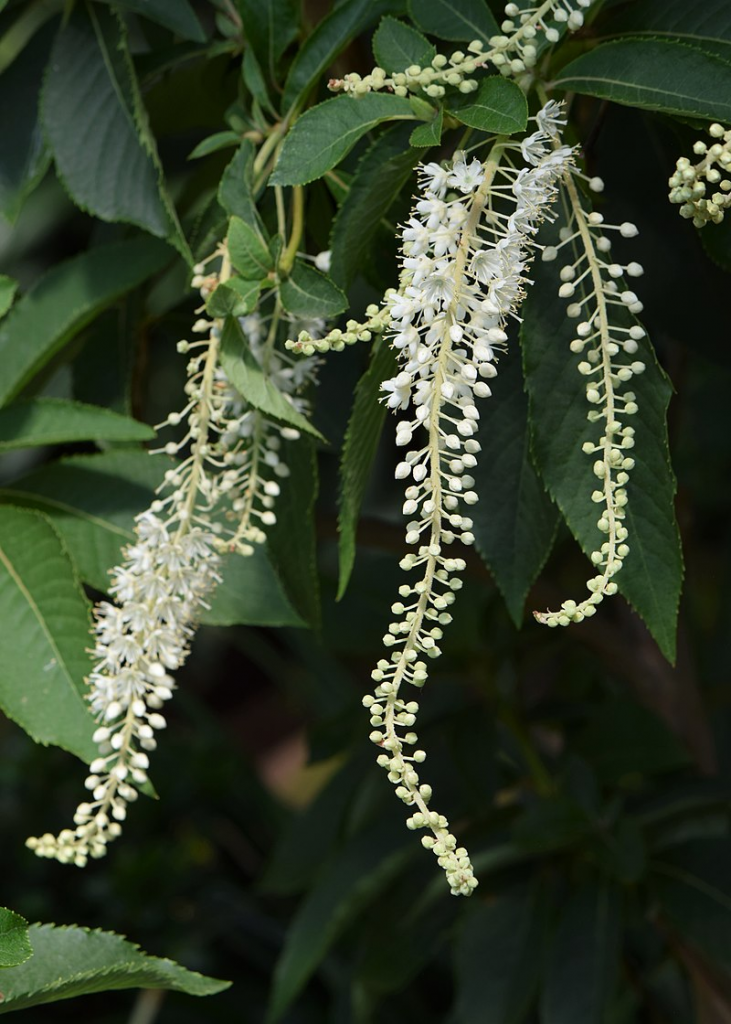
This deciduous shrub or small tree is native to the open mountain forests of southern China, Japan and Korea and is a member of the small plant family, Clethraceae, and is distantly relate to azaleas. The plant grows 10-20′ tall and has terminal clusters of glossy, ovate, serrated leaves that are 2-5″ long and are dark green until turning yellow to maroon or bronze red in the fall. The fragrant white flowers are carried in horizontally drooping, terminal racemes 4-6″ long in mid to late summer. The flowers are attractive to butterflies and bees, and give way to dark brown seed capsules that persist into winter. Additional winter interest is the polished brown to cinnamon exfoliating bark. Japanese clethra is a good choice for a shrub border and hedge, as well as butterfly, pollinator, winter, water, shade, and woodland gardens. The genus name Clethra, is from the Greek word klethra, meaning alder, and refers to the resemblance of the leaves to those of alders. The specific epithet, barbinervis, is said to mean means with veins barbed or bearded and refers to hairs on the leaf veins. Photo Credit Wikipedia

Type: Deciduous shrub or small tree
Outstanding Feature: Flowers; exfoliating bark
Form: Oval
Growth Rate: Slow
Bloom: Terminal racemes of small, white, fragrant flowers from mid to late summer
Size: 10-20′ H x 10-15′ W
Light: Part shade to full sun
Soil: Average, consistently moist to wet, well-drained, slightly acidic
Hardiness: Zones 5-8
Care: Prune immediately after flowering if needed
Pests and Diseases: None of significance but red spiders can be a problem
Propagation: Softwood cuttings in summer, seed
Outstanding Selection:
‘Takaeda Nishiki’ (variegated)
Photo Credit: Krzysztof Ziarnek, Wkimedia Commons